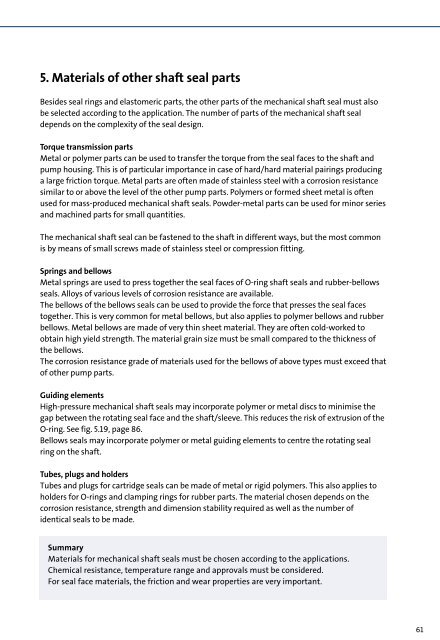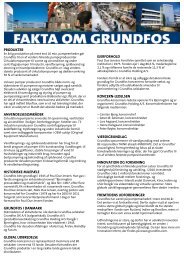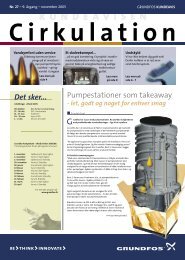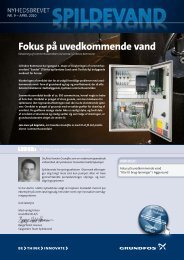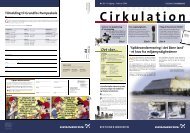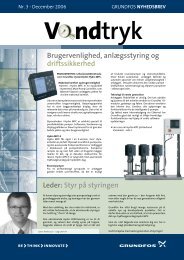Mechanical shaft seals for pumps - Grundfos
Mechanical shaft seals for pumps - Grundfos
Mechanical shaft seals for pumps - Grundfos
Create successful ePaper yourself
Turn your PDF publications into a flip-book with our unique Google optimized e-Paper software.
5. Materials of other <strong>shaft</strong> seal parts<br />
Besides seal rings and elastomeric parts, the other parts of the mechanical <strong>shaft</strong> seal must also<br />
be selected according to the application. The number of parts of the mechanical <strong>shaft</strong> seal<br />
depends on the complexity of the seal design.<br />
Torque transmission parts<br />
Metal or polymer parts can be used to transfer the torque from the seal faces to the <strong>shaft</strong> and<br />
pump housing. This is of particular importance in case of hard/hard material pairings producing<br />
a large friction torque. Metal parts are often made of stainless steel with a corrosion resistance<br />
similar to or above the level of the other pump parts. Polymers or <strong>for</strong>med sheet metal is often<br />
used <strong>for</strong> mass-produced mechanical <strong>shaft</strong> <strong>seals</strong>. Powder-metal parts can be used <strong>for</strong> minor series<br />
and machined parts <strong>for</strong> small quantities.<br />
The mechanical <strong>shaft</strong> seal can be fastened to the <strong>shaft</strong> in different ways, but the most common<br />
is by means of small screws made of stainless steel or compression fitting.<br />
Springs and bellows<br />
Metal springs are used to press together the seal faces of O-ring <strong>shaft</strong> <strong>seals</strong> and rubber-bellows<br />
<strong>seals</strong>. Alloys of various levels of corrosion resistance are available.<br />
The bellows of the bellows <strong>seals</strong> can be used to provide the <strong>for</strong>ce that presses the seal faces<br />
together. This is very common <strong>for</strong> metal bellows, but also applies to polymer bellows and rubber<br />
bellows. Metal bellows are made of very thin sheet material. They are often cold-worked to<br />
obtain high yield strength. The material grain size must be small compared to the thickness of<br />
the bellows.<br />
The corrosion resistance grade of materials used <strong>for</strong> the bellows of above types must exceed that<br />
of other pump parts.<br />
Guiding elements<br />
High-pressure mechanical <strong>shaft</strong> <strong>seals</strong> may incorporate polymer or metal discs to minimise the<br />
gap between the rotating seal face and the <strong>shaft</strong>/sleeve. This reduces the risk of extrusion of the<br />
O-ring. See fig. 5.19, page 86.<br />
Bellows <strong>seals</strong> may incorporate polymer or metal guiding elements to centre the rotating seal<br />
ring on the <strong>shaft</strong>.<br />
Tubes, plugs and holders<br />
Tubes and plugs <strong>for</strong> cartridge <strong>seals</strong> can be made of metal or rigid polymers. This also applies to<br />
holders <strong>for</strong> O-rings and clamping rings <strong>for</strong> rubber parts. The material chosen depends on the<br />
corrosion resistance, strength and dimension stability required as well as the number of<br />
identical <strong>seals</strong> to be made.<br />
Summary<br />
Materials <strong>for</strong> mechanical <strong>shaft</strong> <strong>seals</strong> must be chosen according to the applications.<br />
Chemical resistance, temperature range and approvals must be considered.<br />
For seal face materials, the friction and wear properties are very important.<br />
61


